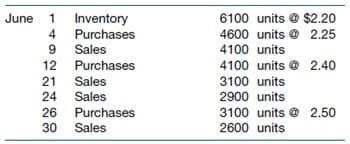ACC102 Fundamentals of Accounting II
Case Study One:
On 1 January 2017, Nicolaidis Ltd purchased two identical new machines at a total cost of $700000 plus GST. It was estimated that the machines would have a useful life of 10 years and a residual value of $50000 each. Nicolaidis Ltd uses the straight-line method of depreciation for all of its equipment. The company’s end of reporting period is 31 December.
Required
- Record the purchase of the trucks on 1 January 2017.
- Record the depreciation expense on the trucks for 2022.
- Assume that early in 2023 the company revalued the machines upwards by $80 000 each and assessed that the machines would last 6 more years instead of 4 but that the residual value would be $80 000. Record all journal entries for the trucks in 2023.
- Make the necessary entries to record the sale of one of the machines on 31 December 2023. The machine was sold for $200 000 plus GST. (Assume that the two machines had the same carrying amount, which equalled their fair values at this date.)
- How much depreciation expense would be recorded on the second machine during 2025 if it were still being used and if its residual value were still $50 000? Why?
Case Study Two:
Tamworth Trading Ltd is a company operating in the retail sector. The beginning inventory of Product EF5089 and information about purchases and sales made during June are shown below.

Tamworth Trading Ltd uses the perpetual inventory system, and all purchases and sales are on credit. Selling price is $5 per unit. GST is 10% and is not included in any of the costs and selling prices above. A stocktake on 30 June revealed 5150 units in inventory. Ignore GST.
Required
- Using the FIFO method, prepare appropriate purchases and sales journals to record these events.
- Prepare an appropriate inventory record for Product EF5089 for June, and post the journals prepared in requirement A above to the appropriate general ledger accounts (assuming that product EF5089 is the only product bought and sold by Tamworth Trading Ltd).
- Prepare an income statement for Tamworth Trading Ltd for June.
Case Study Three:
In early July 2019, Masterton Ltd is considering the acquisition of some machinery for $1 320 000 (GST inclusive) to be used in the manufacture of a new product. The machinery has a useful life of 10 years, during which management plans to produce 500 000 units of the new product. The residual value of the machinery is $100 000.
The following projections were made in order to select a depreciation method to be used for the machinery.

In calculating the profit before depreciation, all expenses have been deducted, including the repairs and maintenance expense.
Required
As the accountant for Masterton Ltd, prepare separate depreciation schedules for the machinery for the 5-year period, using the following depreciation methods:
- straight-line
- diminishing balance
- sum-of-years’-digits
- units-of-production.
Use the following headings for each schedule: ‘Year ending 30 June’, ‘Annual depreciation expense’, ‘Accumulated depreciation’, ‘Carrying amount at end of year’.

